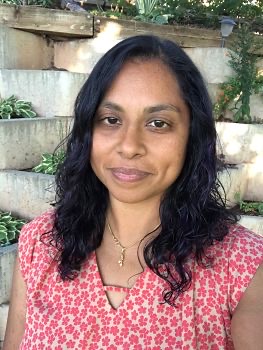Purvi Irwin Discusses Design, Dynamo, Diversity, and More
This interview is part of a series featuring the members of our diverse AU community, from speakers and conference attendees to forum participants and online commenters. You are AU.

1. What’s your current job role?
I’m the practice manager for Architecture at CADD Microsystems. I support architects, landscape architects, and engineers with technology implementations related to Revit and BIM 360 / Autodesk Construction Cloud. This includes software set up, template and content creation, classroom and over-the-shoulder instruction, troubleshooting, and out-of-the-box solution creation.
2. What are your main areas of expertise and interest?
My main areas of expertise are Revit and Autodesk Construction Cloud.
I also have formal training and professional experience in historic preservation, which I practice through my involvement as a board member on the Alexandria, VA Board of Architectural Review. Over the past few years, I have become more involved in DEIA / JEDI initiatives and conversations, both through AU and my local community.
3. Describe a favorite project you’ve worked on using Autodesk software.
I would have to say that my very first Revit project, the National Academy of Sciences Restoration and Rehabilitation project, had the most considerable effect on me and my love for Revit. I started working on it in 2008 and carried it through four versions. I learned so much about Revit and architecture from working on that project, starting in schematic design and managing construction administration and project close-out. The other project that has most influenced how I use Revit is the Kennedy Center Terrace Theater. It pushed the limits of my knowledge and required particular innovation in the documentation.
4. What one challenge in your work would be most satisfying to solve?
The biggest challenge that I face in my day-to-day work is helping people to shift their paradigms and be open to trying something new, and taking the time to learn and grow. Designers often get stuck in a specific way of doing something or are held back by a bad experience that prevents them from really evaluating how they are doing things and how they can be done better.
5. What recent trend or technology has most influenced your work?
Dynamo has been a real game changer with Revit, and the fact that the Revit API has been opened up more and more with each release. This has really allowed everyone to customize the software and has allowed us at CADD to better serve all of our customers’ specific needs.
6. What project or aspect of your work makes you feel you’ve made a positive impact on your industry and the world?
The freedom for me to discover and investigate new tools and workflows that I can then share with my customers is what I feel has given me the most impact. I always tell my clients that my job is to know the intricacies of the software, evaluate each client’s specific needs, and then propose the best solution for their unique challenges. I take care of the tedious parts so they can focus on the fun—the design work. The fact that I work with so many different firms allows me to take what I learn at each and help others with the knowledge.
7. What’s your all-time favorite AU class and why?
What stands out in my mind right now was the class where we saw a model of the Millennium Falcon created in Revit, by the Disney Imagineers. Others that have had a lot of impact include Andrew Milburn’s presentation on using Revit to model Notre Dame, and Turner Fleischer’s presentation on implementing a digital practice. (All of these are from AU 2019.)
8. What has been one of your most impactful moments attending AU and why?
Forging life-long friendships and meeting many “BIM celebrities” in person (and becoming friends with them).
9. What has recently inspired or moved you—a book, film, article, website, app, podcast, etc.?
My favorite design-related podcast is 99% Invisible. As I have also been more recently involved with Diversity & Inclusion initiatives, and with neurodiversity in my family, something that I’ve found to be useful in understanding people in general has been the Tilt Parenting podcast along with the book Differently Wired, which came out of the podcast. Thinking about how to parent neurodiverse children also helps you to support and collaborate with those who think differently from you.
10. What’s a fun fact that people may not know about you?
I’m pretty open about my “fun facts!” I grew up in Salt Lake City, a first-generation Indian American, and the first person in my extended family to be born in the United States. I love to craft (some might say it’s an obsession) and I love movies and shows that include singing and dancing.
11. If you could have dinner with one person, living or dead, who would it be and why?
At this point in my life, with where the world has been the past 18 months, I would love to be able to go back to normal and see all my friends and family again, in person. This human connection is what I miss the most.
12. If you could contribute one thing to making a better world, what would it be?
I hope that I’m already doing it with my work with Diversity & Inclusion and my support of women and girls. I believe that we can all take small steps every day that can contribute to making a better world.
Check out Purvi’s profile (and follow her) to learn more about her work and contributions to the AU community.




